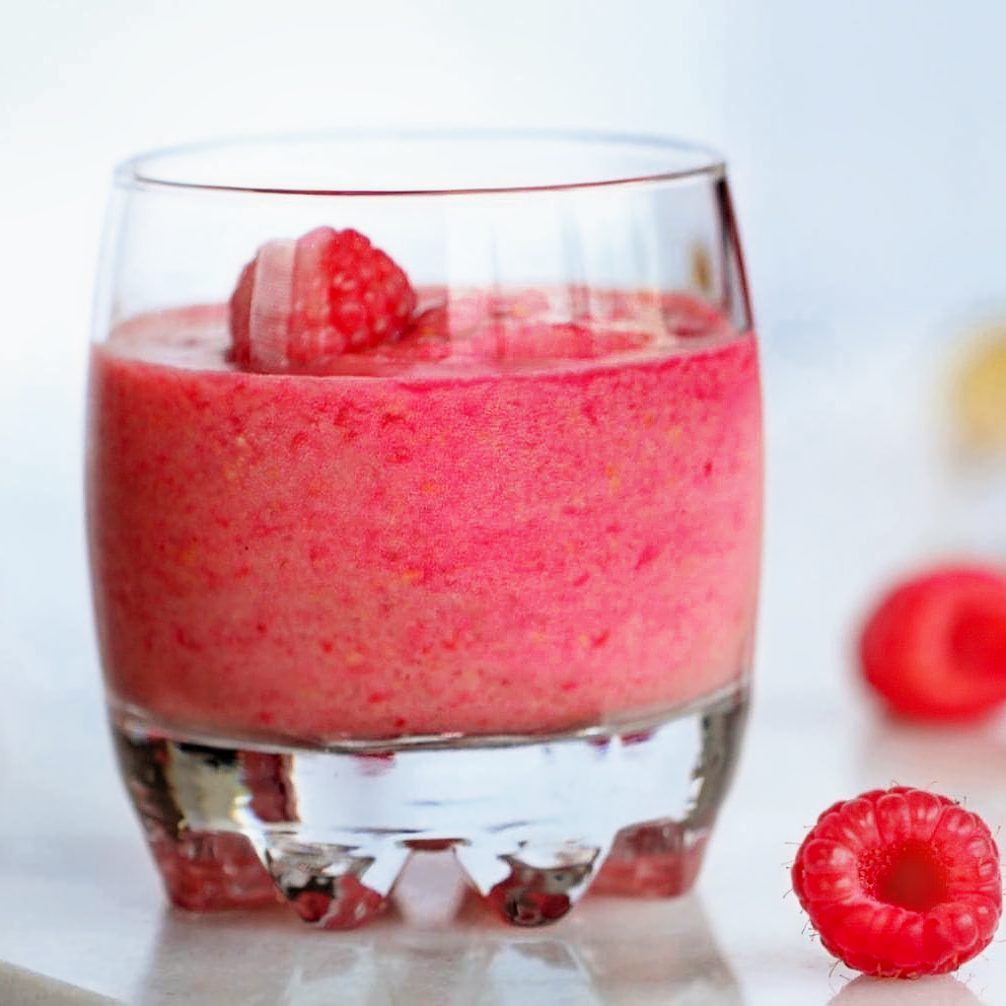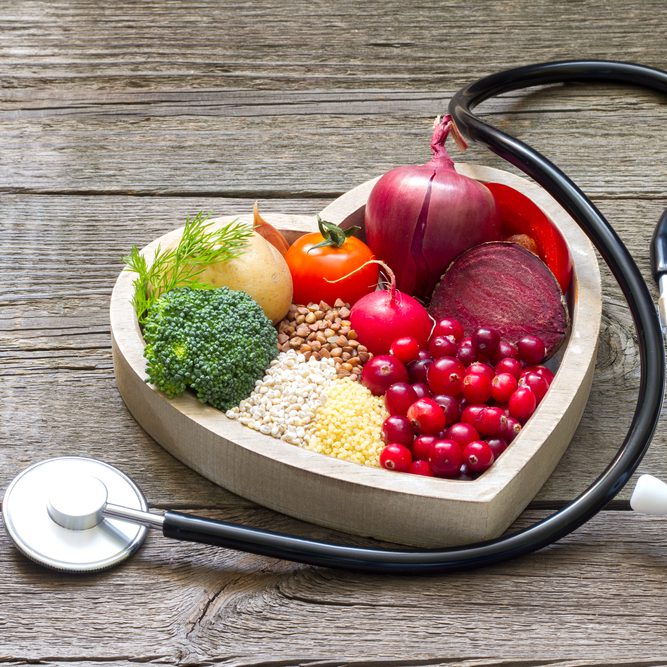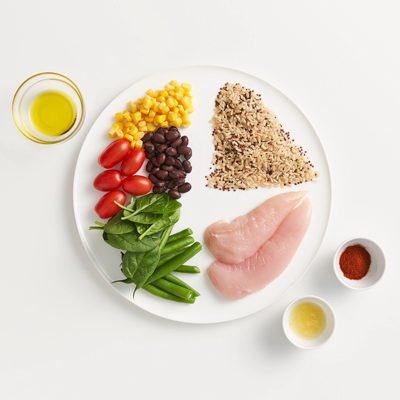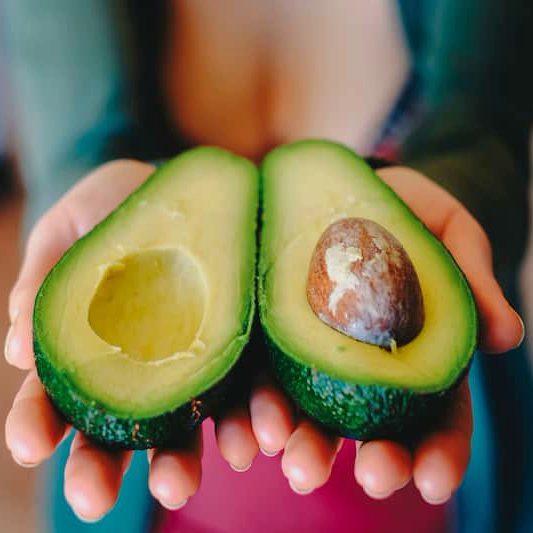What does heart healthy eating look like?
Key takeaways
- Healthy eating can help protect your heart and prevent you from developing heart disease.
- Healthy eating is not about "good" and "bad" foods or restrictive diets. It's about making small changes that you can continue long term.
- Choose foods from our heart healthy eating pattern to help make healthy choices.
- How much you eat is also important.
- Use our recipes and meal plans to include heart healthy foods in your eating pattern.
You might have heard that changing the way you eat can impact your health. But what about your heart specifically?
Poor diet is one of the leading risk factors for heart disease in Australia [1]. What you eat and drink impacts several heart disease risk factors, including:
- Blood pressure
- Cholesterol
- Weight
- Diabetes risk.
What does a heart-healthy eating pattern look like?
- Enjoying a wide variety of foods focused on fresh and unprocessed food can be good for your heart.
- A diet naturally low in unhealthy fats, salt and added sugar, and rich in whole grains, fibre, vitamins, minerals and healthy fats is ideal.
- Follow our 5-step heart-healthy eating pattern to help you achieve this balance.

1. Eat plenty of vegetables, fruit and wholegrains
Fruit and vegetables are some of the best foods for your heart, but most Australians aren't eating anywhere near enough. These foods contain a variety of vitamins and minerals, as well as fibre and antioxidants, and have been shown to help prevent heart disease.
Wholegrains are foods like brown rice, wholemeal pasta, grainy bread and oats. These foods are full of fibre and can help lower your cholesterol. Swapping from refined grains like white bread and white rice to wholegrain versions is a simple change that can improve your diet.
2. Include a variety of healthy protein-rich foods
Some protein-rich foods are better choices than others. The best options are plant-based proteins like beans, chickpeas, lentils, nuts and seeds, as well as fish and seafood. These foods have been shown to reduce your risk of developing heart disease [2].
Eggs and poultry are also protein-rich foods that can be enjoyed as part of a heart-healthy eating pattern.
If you eat red meat, it's best to limit it to 1-3 meals per week as research shows it is associated with an increased risk of heart disease [3].
3. Choose unflavoured milk, yoghurt and cheese
These foods don't increase or decrease your risk of heart disease, but they can be an important source of calcium, protein and other minerals.
Unflavoured versions with no added sugar are the healthiest options.
If you have heart disease or high cholesterol, reduced-fat milk, yoghurt, and cheese are healthier options. For those who don't, you can choose between reduced-fat or full-fat alternatives.
4. Include healthy fats and oils
Fats and oils can play an important role in your risk of developing heart disease,and they can add flavour and fun to your food.
Different types of fats can impact your health differently—healthy fats can help protect your heart, and unhealthy fats can increase your risk of developing heart disease.
Choose foods with high amounts of healthy fats such as avocados, olives, nuts and seeds, and use healthy oils for cooking, for example, olive, canola, sunflower, peanut and soybean oil. These foods can help lower your cholesterol.
5. Use herbs and spices to flavour foods instead of salt
Eating too much salt can lead to high blood pressure, which is a risk factor for heart disease. On average, Australians are eating nearly double the recommended amount of salt [4].
Many people don't realise that most of the salt they eat is found in processed and packaged foods such as canned foods, deli meats (like ham and salami) and baked goods.
One of the best ways to reduce the amount of salt you eat is to base your diet on fresh, unprocessed foods like fruit and vegetables. If you want to add extra flavour to your food, try adding herbs and spices.Did you know all our Heart Foundation recipes help reduce salt intake and build your confidence in using herbs and spices – explore here.
What foods should I have less of?
Reducing the amount of highly processed food you eat is great for your heart. Up to 35 per cent [5] of the average Australian diet is currently made up of highly processed foods, such as:
- Baked goods e.g. cakes, biscuits and pastries
- Chocolate
- Chips
- Lollies
- Sugary drinks e.g. soft drinks, energy drinks, sports drinks
- Take away food e.g. pizza, burgers.
These foods are usually high in added sugar, salt, and saturated and trans fats, and they aren't part of a heart-healthy eating pattern. Try to have these foods only sometimes and in small amounts.
What about drinks?
Water is the drink of choice for heart health. If you are looking for a heart-healthy drink other than water (either for flavour or for enjoyment), you can opt for the following drinks:
- Sparkling water (try adding chopped fruit or herbs; for example, fresh mint).
- Unflavoured milk.
- Plant-based milks with added calcium, like soy, almond, oat, rice milk.
- Tea.
- Coffee
- Small glass (125ml) of 100% fruit or vegetable juice.
Sugary drinks are not recommended, and we don't recommend drinking alcohol for heart health.
Avoid over-eating: The ideal portion size
How much you eat is another important part of eating well for your heart. There are some foods we are eating too much of, some foods that we don't eat enough of, and in general, the size of our meals has grown over time.
The amount you should eat depends on many factors, including the type of food served. Use a plate with healthy proportions from different food groups as shown below.
Image explanation: A heart healthy eating plate made up of 1/2 vegetables, 1/4 carbohydrates and 1/4 protein, along with healthy oils and herbs & spices.
If I have heart disease, or risk factors like high blood pressure or high blood cholesterol, do I need to make further changes?
Yes, there are some key changes you can make. The Heart Foundation recommends that people with existing heart disease,including those recovering from a heart attack,should follow a Heart Healthy Eating Pattern with some key changes:
- Choose reduced fat and unflavoured milk, yoghurt and cheese.
- Consume less than seven eggs per week
- Include 2-3 grams of plant sterols per day from fortified food products (special varieties of margarine, milk, yoghurt and breakfast cereals) to assist in lowering LDL cholesterol levels
- If you consume red meat (like beef, pork, veal and lamb) – choose lean cuts and eat no more than 350g per week.
Eating healthy foods can help you recover and reduce your risk of more heart problems. A balanced heart healthy diet can decrease the risk of cardiovascular disease (CVD) events and mortality, and CVD risk factors, such as high blood pressure and high cholesterol.
We're here to help: healthy eating tools and resources
Read more about eating well for a Healthy Heart, and check to see if your current eating pattern aligns with our healthy eating recommendations by using our nutrition action plan.
We have plenty of resources to help you follow a heart-healthy eating pattern.
- Explore our full range of recipes for delicious, budget-friendly and easy to prepare heart-healthy meals you can make at home.
- Discover our collection of free recipe e-books, from Family recipes on a budget to '5 Ingredient Recipes' plus many more.
- Get four weeks of easy-to-follow dinner recipes, shopping lists, tips and other helpful information to make healthy eating easy with our free Heart Healthy Dinner Plan.
Looking for more information? Explore our resources on healthy eating and recent articles.
Looking for more information on the science behind our recommendations?
We understand there is a lot of nutrition misinformation, and its important to find information from credible and trustworthy places. The Heart Foundation's Heart Healthy Eating Pattern recommendations, and associated resources, are backed by the latest science and made with the unique needs of Australians in mind.
Curious about the evidence that informs our recommendations? Read more about our evidence reviews and position statements.
source: https://www.heartfoundation.org.au/bundles/healthy-living-and-eating/healthy-eating
References
- Institute for Health Metrics and Evaluation 2018, Global Burden of Disease Study 2017 (GBD 2017) Results, Global Burden of Disease Collaborative Network, Seattle, Available from http://ghdx.healthdata.org/gbdresults-tool Collins CE, Burrows TL, Rollo ME.
- Dietary Patterns and Cardiovascular Disease Outcomes: an Evidence Check rapid review brokered by the Sax Institute for the National Heart Foundation of Australia, 2017 Ndanuko et al (2019)
- Animal sourced proteins (meat and poultry) and Cardiovascular Health: an evidence check brokered by the Sax Institute for the National Heart Foundation of Australia. 2019. Santos JA, Webster J, Land MA, Flood V, Chalmers J, Woodward M, Neal B, Petersen KS.
- Dietary salt intake in the Australian population. Public Health Nutrition. 2017 May:1-8. Australian Institute of Health and Welfare 2018.
- Nutrition across the life stages. Cat. no. PHE 227. Canberra: AIHW











